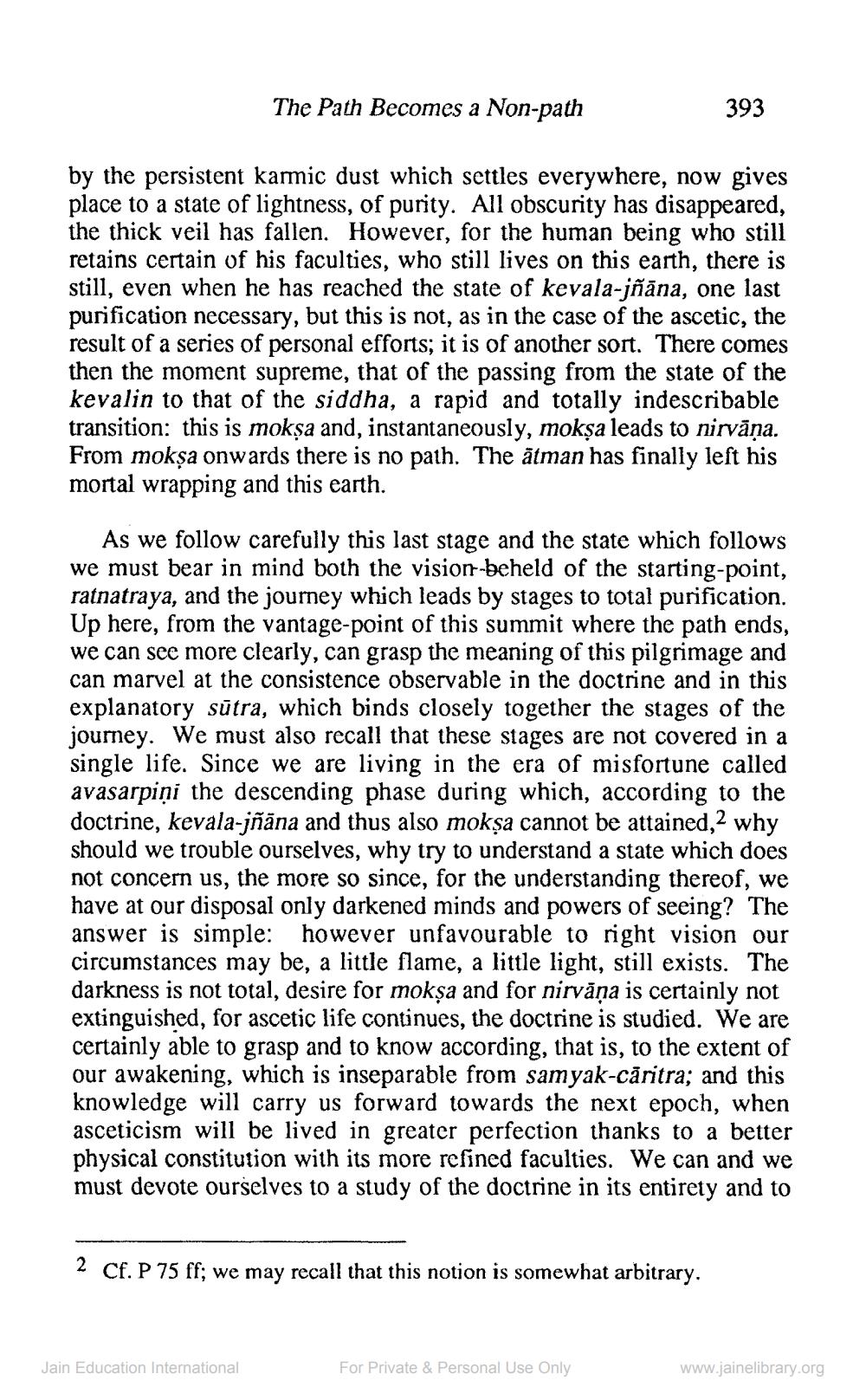________________
The Path Becomes a Non-path
393
by the persistent karmic dust which settles everywhere, now gives place to a state of lightness, of purity. All obscurity has disappeared, the thick veil has fallen. However, for the human being who still retains certain of his faculties, who still lives on this earth, there is still, even when he has reached the state of kevala-jñāna, one last purification necessary, but this is not, as in the case of the ascetic, the result of a series of personal efforts; it is of another sort. There comes then the moment supreme, that of the passing from the state of the kevalin to that of the siddha, a rapid and totally indescribable transition: this is mokșa and, instantaneously, mokṣa leads to nirvāņa. From mokṣa onwards there is no path. The ātman has finally left his mortal wrapping and this earth.
As we follow carefully this last stage and the state which follows we must bear in mind both the vision-beheld of the starting-point, ratnatraya, and the journey which leads by stages to total purification. Up here, from the vantage-point of this summit where the path ends, we can see more clearly, can grasp the meaning of this pilgrimage and can marvel at the consistence observable in the doctrine and in this explanatory sutra, which binds closely together the stages of the journey. We must also recall that these stages are not covered in a single life. Since we are living in the era of misfortune called avasarpiņi the descending phase during which, according to the doctrine, kevala-jñāna and thus also mokşa cannot be attained 2 why should we trouble ourselves, why try to understand a state which does not concern us, the more so since, for the understanding thereof, we have at our disposal only darkened minds and powers of seeing? The answer is simple: however unfavourable to right vision our circumstances may be, a little flame, a little light, still exists. The darkness is not total, desire for mokṣa and for nirvāṇa is certainly not extinguished, for ascetic life continues, the doctrine is studied. We are certainly able to grasp and to know according, that is, to the extent of our awakening, which is inseparable from samyak-căritra; and this knowledge will carry us forward towards the next epoch, when asceticism will be lived in greater perfection thanks to a better physical constitution with its more refined faculties. We can and we must devote ourselves to a study of the doctrine in its entirety and to
2 Cf. P 75 ff; we may recall that this notion is somewhat arbitrary.
Jain Education International
For Private & Personal Use Only
www.jainelibrary.org




